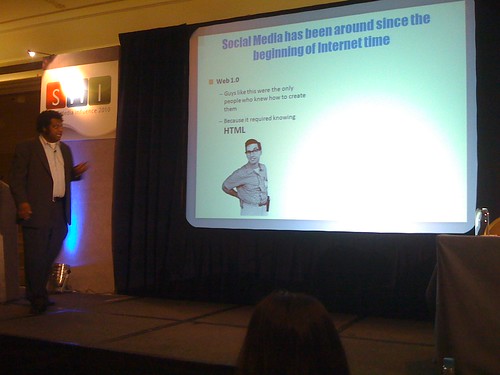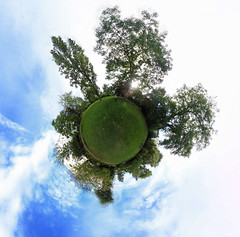I loved the opener to Matthew Taylor’s annual lecture at the RSA last night: “At the heart of our public debates about the future of the human race is the [Reggie Perrin-like] question ‘can we go on like this?’”
That set the tone for an hour of deep, communal, navel-gazing. But, as Matthew himself points out, we need it! This sort of analysis is all too often lacking.
Matthew has been a while writing his lecture (now available as a pamphlet). Its core idea of 21st Century Enlightenment was first discussed in a blog post a few months ago. Since then the essay text has been debated and challenged, pulled apart and added to, not only on Matthew’s blog, but also on a wiki.
The result appeared to be a triumph of collaboration (although it wasn’t necessarily presented as such, and I’ve no idea how many of the final words were down to Matthew and how many to his many invisible co-authors). The lecture was, overall, seamlessly structured and imaginatively argued.
Matthew’s proposition is that it’s time to complete the Enlightenment project begun in the Eighteenth Century: he sees the RSA is the ideal vehicle to take this forward (“21st Century Englightenment” is the RSA’s new strapline).
Certainly, following on from Arie de Geus’ idea that organisations need to reflect the environment around them if they are to flourish, Matthew is orchestrating the structural changes necessary to make his vision a reality. As he himself admits, “the re-imagining of the RSA Fellowship itself is in pursuit of a new ethic of collaboration … the RSA is looking to develop a model of innovative social activism. The hierarchical, bureaucratic model of membership organisations is bust.”
As a member of the new(ish) RSA Fellowship Council, I’m pretty involved in this process. So that makes all that Matthew has to say doubly interesting.
His argument of 21st Century Englightenment is based on the three ideas which the philosopher Tzvetan Todorov (In Defence of the Englightment) suggests were at the core of the original Enlightenment: autonomy, universalism and humanism.
In his lecture, Matthew updates these principles to become “self-aware autonomy”, “empathic universalism” and “the new humanism”. (I’ll outline them a bit here to save you reading the pamphlet)!
Self-aware Autonomy
Autonomy is defined as the idea “that every individual should be able to make their own choices about their own life free from overbearing religious and political authority”. According to Matthew, “we need to aim for a [more] self-aware form of autonomy, informed by a deeper appreciation of the foundations, possibilities and frailties of human nature.”
In reaching this more self-aware state, we need to accept our limitations: “Whatever happens in the future, we will still have to find a way of negotiating a modern world with brains that evolved in prehistoric hunter-gatherer societies.”
We must learn to be more mindful, especially of our own inconsistencies. For example, “in many policy areas the preferences people express in opinion polls are systematically different to those which they reach after a process of deliberation”
We need to accept that “our capacity for reason does rely on emotion” (rather than some, cold, disassociation), as well as the fact that we are heavily influenced by our networks and “context” (something explored brilliantly in Nicholas Christakis and James Fowler’s Connected).
Above all, says Matthew, we need “to distinguish our needs from our appetites and our amazing human potential from our often self-defeating aspirations.”
And he cites David Halpern who discovered that “the Danes are the happiest people in the world not only because of their material circumstances but because they say what matters most
in life is good relationships. In contrast, the most miserable nationality, the Bulgarians, say money is the key to happiness.” (This was probably one of the most tweeted quotes of the evening).
Empathic Universalism
Universalism is described by Matthew as “the idea that all people are deserving of dignity and share fundamental rights.” He sees this principle, now, as having its greatest potential if it is enhanced by empathy: “We need to pay more attention to our innate capacity for empathy”.
Matthew observes that, “despite major departures from the trend, most terribly in the twentieth century, the history of the human race has been one of diminishing person-to-person violence.”
He points out that “before the Enlightenment era, for example, mutilation and torture were conventional punishments for minor misdemeanours that would today receive a fine”. In addition, an analysis of medieval records by the criminologist Manuel Eisner, “found that the rate of killing has subsided from one in a thousand a year in the Middle Ages to one in one hundred thousand in modern Europe”.
We have seen “a revolution in social attitudes towards race, gender and sexuality” and “the emergence of global state and philanthropic agencies now committed to the ambitious Millennium Goals.”
However, there are many drawbacks: levels of inequality have started rising again, tensions between ethnic groups have “taken on new dimensions”, anti-immigrant sentiment has grown in richer countries, violent gang culture exists in poorer areas, a minute proportion of the rich world’s wealth is devoted to tackling global poverty and national interests still dominate global concerns (we have weaker global governance than we used to, apparently).
Like many of his (my?) generation, Matthew is concerned about video games: “If we are concerned about the factors shaping the empathic capacity of future generations we should be willing, at least, to ask searching questions about the social experiment now taking place in the bedrooms of millions of young people.”
He cites a June 2010 paper to the American Association of Psychological Science which combined studies from 14,000 college students and identified “a marked and growing decline in empathy in comparison to the late 1970s”.
One solution lies in design: “A stronger recognition of empathic capacity as a core capability for modern citizens would also influence the design of institutions – public, commercial and civic – and public places, including the online world. It would provide a case for public investment in art and culture which might transcend the sterile debate between art’s intrinsic and instrumental benefits.”
The new humanism
Todorov described his third Enlightenment principle as “the human end purpose of our acts”. Humanism, says Matthew, is the idea that “we should organise the world according to what is best for human beings.” And through “the new humanism”, he suggests that we “more often ask what is progress and acknowledge the fundamentally ethical nature of this question.”
Our society is currently dominated by three logics, says Matthew: of scientific and technological progress, of markets, and of bureaucracy:
“The limitation of the logic of science and of markets lies in an indifference to a substantive concern for the general good. If something can be discovered and developed it should be discovered and developed. If something sells then it should be sold. The problem with the logic of bureaucracy, as Max Weber spotted over a hundred years ago, is its tendency to privilege procedural rationality (the rationality of rules) over substantive rationality (the rationality of ends).”
We should reformat our ultimate aim to be “maximising human happiness”.
Ethics is a key part of this because ethical thinking is also part of human nature. Matthew cites recent research from the Yale University Infant Cognition Center which found that “even before they have developed speech, infants make rudimentary moral judgements. In one experiment babies between six and twelve months old watched a simple coloured geometric shape – for example, a red circle with eyes – try to climb a slope. When other shapes intervened, apparently either helping or blocking the circle, the children’s responses showed a clear preference for
the helping shapes.”
Ah. Bless ‘em.
Matthew goes on to compares sexual repression in the late Victorian era to the suppression of ethical discourse today: “Just as sexual repression spawned hypocrisy and vice in the nineteenth century, so the suppression of ethical discourse leads to the strange coincidence, remarked on by Edward Skidelsky, of an era which combines social tolerance and cultural relativism alongside an almost continuous drum beat of public indignation against everyone from bankers and celebrities to welfare cheats and immigrants.”
And he moves onto his conclusion by incorporating Michael Thompson’s ideas around Cultural Theory:
“Superficially, ethical differences may look like a threat to social harmony or organisational coherence. In fact, recognition and respect for difference is the foundation for an enduringly cohesive society and a strong basis for innovative thinking. [In some circumstances] Resolution is impossible, but the recognition of difference can enable ‘clumsy’ but creative solutions.”
In conclusion
There are several signs that we are moving towards a more self-aware society, says Matthew: the recognition of the importance of the earliest years of a child’s life, the increased interest in mental health issues, the multidisciplinary focus on human motivation and behaviour in universities, the growth of “social businesses”, the fostering of inter-faith dialogue, the upsurge in collective forms of recreation (music festivals, art exhibitions, lectures and debates) and the greater willingness of government and the OECD to question conventional measures of economic growth.
Despite these developments, and no doubt to encourage them, we desperately “need to see a more reflective public discourse; a revival of a public sphere in which we might debate who we are as social beings.”
The RSA, Matthew feels, is well-placed to spearhead this revival.
Good on him!
PS: The liveblogging of RSA Fellowship Council meetings is just part of the process of opening up debate, making the RSA more accessible and putting its ideas and challenges more at the centre of public life. I’ll be liveblogging the next meeting here from 1pm on Tuesday 29 May, so do come back then!
Photo: strollerdos



